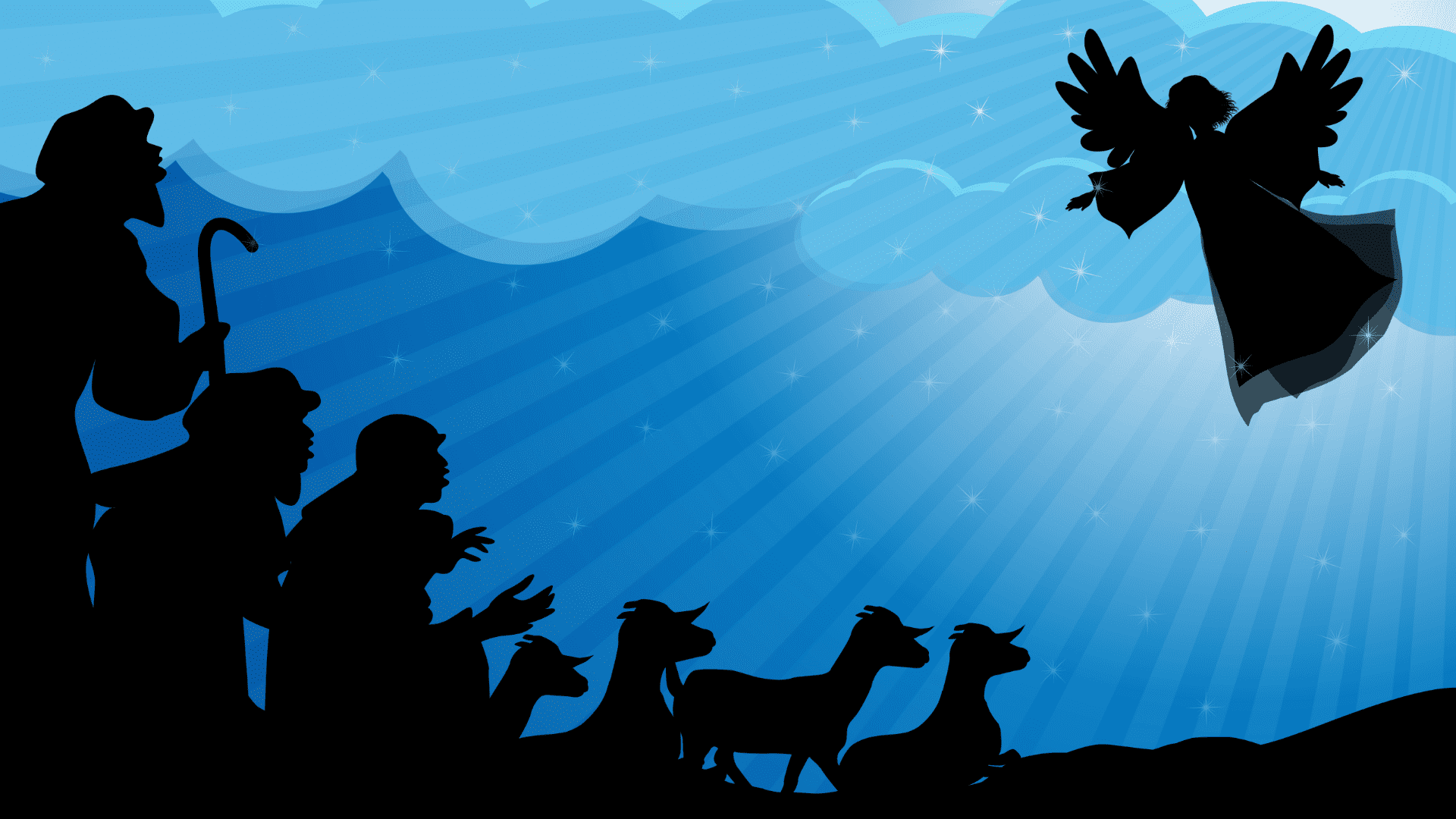Sharing the Beauty of Relationship With Jesus (Luke 19:1-10)

Big Idea: Jesus draws unlikely people to himself through community.
I’m convinced that there’s something so obvious in the Bible that we usually miss it. It’s like the store that we walk by every day, but one day we ask, “How long has that been there?” and we’re told, “Ummm…five years!”
What is so obvious in the Bible that we usually miss it? Food. More specifically, the role of food in following Jesus. As one person put it, “In Luke’s Gospel Jesus is either going to a meal, at a meal, or coming from a meal” (Robert Karris). Or, “His mission strategy was a long meal, stretching into the evening. He did evangelism and discipleship round a table with some grilled fish, a loaf of bread, and a pitcher of wine” (Tim Chester).
There are three times that the Bible includes the phrase, “The Son of Man came…”
- For even the Son of Man came not to be served but to serve, and to give his life as a ransom for many. (Mark 10:45)
- For the Son of Man came to seek and to save the lost. (Luke 19:10)
- The Son of Man has come eating and drinking… (Luke 7:34)
The first couple describe why Jesus came: he came to serve, give his life a ransom, and to seek and save the lost. The last verse tells how he did this. It’s about his method. How did Jesus serve and seek and save the lost? By eating and drinking.
Here’s what I’m saying: relationships are essential to sharing the good news about Jesus. And relationships often happen best when food is involved.

We’re in a very short series on our mission as a church. Our mission, in case you don’t know or remember it, is:
Inviting people into community to share in the beauty of relationship with Jesus.
Last week we looked at the first part of this: inviting people into community. We talked about the importance of loving and serving people through hospitality.
Today we’re going to look at the second part of our mission: to share in the beauty of relationship with Jesus. The reason why we invite people into community is because we want people to share in the beauty of relationship with Jesus.
But I have to admit that you and I may have some questions about this. Is hospitality and friendship-building really a good way of people coming to know Jesus? It sounds like it could be a copout: just build relationships with people, and they will start to see the beauty of relationship with Jesus.
So today, I want to look at a story of this happening. I want us to see that when we do this intentionally, we’re not only doing evangelism effectively, but we’re also doing evangelism the way that Jesus did.
The Mission of Jesus
Before we look at the story, I want to look at the end of the story. In the concluding verse of this passage, Jesus says, “For the Son of Man came to seek and to save the lost” (Luke 19:10).
This is one of the verses that helps us understand why Jesus came to the earth. It’s crucial to understanding his mission. Jesus was present in this story with two kinds of people:
- One group was known for breaking the rules. They were known for being sinners, for being the kind of people who were distant from God. Zacchaeus, the main character in this story, was such a man. He was a tax collector. Tax collectors were viewed as traitors and sell-outs. Not only did he work for Rome, the occupying force, but he was able to levy whatever amount of money he wanted and keep some of it for himself. He and his kind were known for indulging themselves, taking a bit extra at the expense of others, and advancing themselves to get ahead.
- Then you have the religious teachers and leaders. They were the ones who followed the rules to a T. They were good, nice, religious, and upright, and they didn’t think very well of the other group of people. They looked down on them, and they looked down on Jesus for spending time with sinners and tax collectors.
According to Jesus, he came for the first group. Jesus is on a quest for people who don’t know God and have no interest in him. Which means, by the way, that when we join Jesus on his mission, we join this quest too.
We live in a post-Christian culture. The majority of people in our society have no interest in attending church. A couple of observers write:
Merely opening our doors each Sunday is no longer sufficient. Offering a good product is not enough…What is clear is that great swathes of America will not be reached through Sunday morning services… It is not a question of “improving the product” of church meetings and evangelistic events. It means reaching people apart from meetings and events. (Everyday Church)
When you put all of this together, you realize that of the 10,000 plus people who live in Liberty Village, most of them will probably never come to our church no matter what we do.
There is a way to build a church that doesn’t care about these people. There are enough of the second group of people — the religious — to be make church work. We could just rely on waiting until Christians move into the area, and become the destination for them. It’s a lot easier. In some ways it’s a lot cleaner.
We could do that — except that Jesus is concerned for those who have no interest in church. Something Tim Keller said has always stayed with me:
Jesus’s teaching consistently attracted the irreligious while offending the Bible-believing, religious people of his day. However, in the main, our churches today do not have this effect. The kind of outsiders Jesus attracted are not attracted to contemporary churches, even our most avant-garde ones. We tend to draw conservative, buttoned-down, moralistic people. The licentious and liberated or the broken and marginal avoid church. That can only mean one thing. If the preaching of our ministers and the practice of our parishioners do not have the same effect on people that Jesus had, then we must not be declaring the same message that Jesus did. (The Prodigal God)
Jesus is on mission to reach the majority of people who will never show up at our church — and we’re called to join him on this mission. He very much cares for the people in our community who have no interest in him. He came to seek and save the lost. Because he cares about them, we care about them too.
Let’s look at what it looks like.
Begin With the Most Unlikely People
Here’s where it starts: begin with the most unlikely people.
In this passage, Luke goes out of his way to show us how unlikely a person Zacchaeus is as a potential follower of Jesus. He has two big strikes against him:
- First, he’s the chief tax collector in a city that was a major toll collection point. He was no minor tax collector like Jesus’ disciple Levi. He probably sat on top of a group of tax collectors or extortioners and raked the money in. Based on his career, he had probably experienced social ostracism, isolation, and contempt. He’s been called a “sinner supreme.” Nobody thought that he would be a good candidate to leave all of that and follow Jesus.
- Second, Jesus just finished saying, “For it is easier for a camel to go through the eye of a needle than for a rich person to enter the kingdom of God” (Luke 18:25). Camels were the largest animal in Palestine, and the eye of a needle is the smallest opening imaginable. You just don’t thread a camel through the eye of a needle. Money can get in the way of following Jesus, and Zacchaeus had lots of money
Zacchaeus is such an unlikely candidate that people can’t even believe that Jesus would associate himself with the guy. Verse 7 says, “And when they saw it, they all grumbled, ‘He has gone in to be the guest of a man who is a sinner’” (Luke 19:7).
In all of Jericho, he may have been the least likely person to follow Jesus.
This leads me to ask you the question: who is the least likely person you know to follow Jesus? That may be a good place to start.
As we think about our mission — inviting people into community to share in the beauty of relationship with Jesus — let’s think about the most unlikely people, and then begin to ask what God may be doing. I’m learning that it’s sometimes the people we don’t expect who may be the first to respond to an invitation from Jesus.
You may know that as a church we’ve been encouraging you to keep a list of three people that you’re praying for and investing in for the sake of the gospel. I hope you’ve been doing this. If you haven’t, I would encourage you to start right now.
As I’ve been doing this, two of the three people on my list are long shots. For them to come to Jesus would be nothing short of a miracle. To top it off, I keep a list of others I’m praying for regularly in this community. When one of them comes up in my prayer list, my first thought is usually, “You’ve got to be kidding. He will never become a Christian.”
I would encourage you to do the same. Pray for and begin to build relationships with the most unlikely people. Jesus specializes in penetrating the hearts of those we’d least expect.
Consider What Jesus May Be Doing
Second: consider what Jesus may be doing. As you look at this story, you see Zacchaeus climbing a tree to see who Jesus is. This is about the only time that the Bible provides a physical description of someone: he’s short. He has to climb a tree to get a glimpse of Jesus. His lack of height and the size of the crowd create a barrier between Zacchaeus and Jesus.
What were his intentions? We really don’t know. The text simply says that he wanted to see who Jesus is. It could have been nothing more than curiosity. He may have heard all about Jesus and wanted to see what the fuss was about — just like you and I may go a few blocks out of our way to see a star walk the red carpet at TIFF.
Whatever his intentions were, we know that Jesus had intentions. Jesus spots Zacchaeus in the tree, which was itself an accomplishment. Sycamore trees were low to the ground and pretty leafy, which would mean that it’s not that easy to spot someone. Then Jesus calls out his name. “Zacchaeus, hurry and come down, for I must stay at your house today” (Luke 19:5). How did Jesus know his name? Did his reputation precede him? Did someone point him out? Or did Jesus know his name by some miracle? We don’t really know.
What we do know is that Jesus took the initiative. When he said that he must stay at his house today, the language implies divine necessity. Jesus must pursue Zacchaeus.
And here’s the truth for all of us: whenever someone moves toward Jesus, it’s because Jesus has first taken the initiative and moved toward them. God irresistibly draws us to himself. Hundreds of years ago someone described it like this: “God so calls as He allures; He does not force, but draw. The freedom of the will is not taken away, but the stubbornness of it is conquered. ‘Thy people shall be willing in the day of thy power’ (Psalm 110:3)” (Thomas Watson).
The great news is that Jesus is at work drawing people to himself around us. Never underestimate the work of Jesus. Jesus is drawing people to himself.
Third point, and then we’re done.
Show the Beauty of Jesus in Community
It’s fascinating that Jesus invited himself to the house of Zacchaeus. We can only imagine what took place as Jesus sat down at the table with Zacchaeus. They ate, they talked, they got to know each other. Sometime, somehow, in the middle of that visit, Zacchaeus was transformed. The man who had been driven by money up until that point know became driven with a love for Jesus. He repented of his sins, gives away half of his possessions, and offers to make restitution for the money that he’d defrauded.
What took place around that table? We don’t really know — except the same thing has been happening around tables ever since.
How will we join Jesus on his mission to seek and save the lost? I’m pretty sure it will involve inviting people into community so that they see the beauty of relationship with Jesus. Steve Timmis and Tim Chester write:
Our approach to mission should involve three elements: (1) building relationships, (2) sharing the gospel message, and (3) including people in community.
The church may never outperform TV shows and music videos, but there is nothing like the community life of the church. There is nowhere else where diverse people come together in the same way. There is nowhere else where broken people find a home. There is nowhere else where grace is experienced and God is present by his Spirit. (Everyday Church)
How does Jesus draw unlikely people to himself? By taking the initiative and inviting them into community.
How will we join Jesus on this mission? By taking the initiative and inviting them into community. Jesus draws unlikely people to himself through community. There’s nothing like the community life of the church.
Three questions.
Who are you praying for? I hope you’ll join me in praying for three people. And I hope that you will put at least one very unlikely person on that list. Think of the least likely person you know to become a Christian. That may be the person that Jesus is going after.
Second, have you considered the role that relationships might play in our mission? Maybe the first step in mission is to say, “I need to come over to your house.” Or, “You really need to come over to my house. We need to have dinner together.” Jesus doesn’t usually draw people to himself through abstract principles, but through relationships. There are many people who will never come through the door of this church, but they will come through the door of your condo. They will have you over. As you sit over food, as Jesus said with Zacchaeus, we can expect that Jesus will draw people to himself.
Finally, will you respond to the friendship of Jesus today? Jesus may be taking the initiative with some of you today. Respond to him. If you have already, let’s respond in worship and gratitude today.






